The nature of art: Jenny Holzer’s Tuscan garden
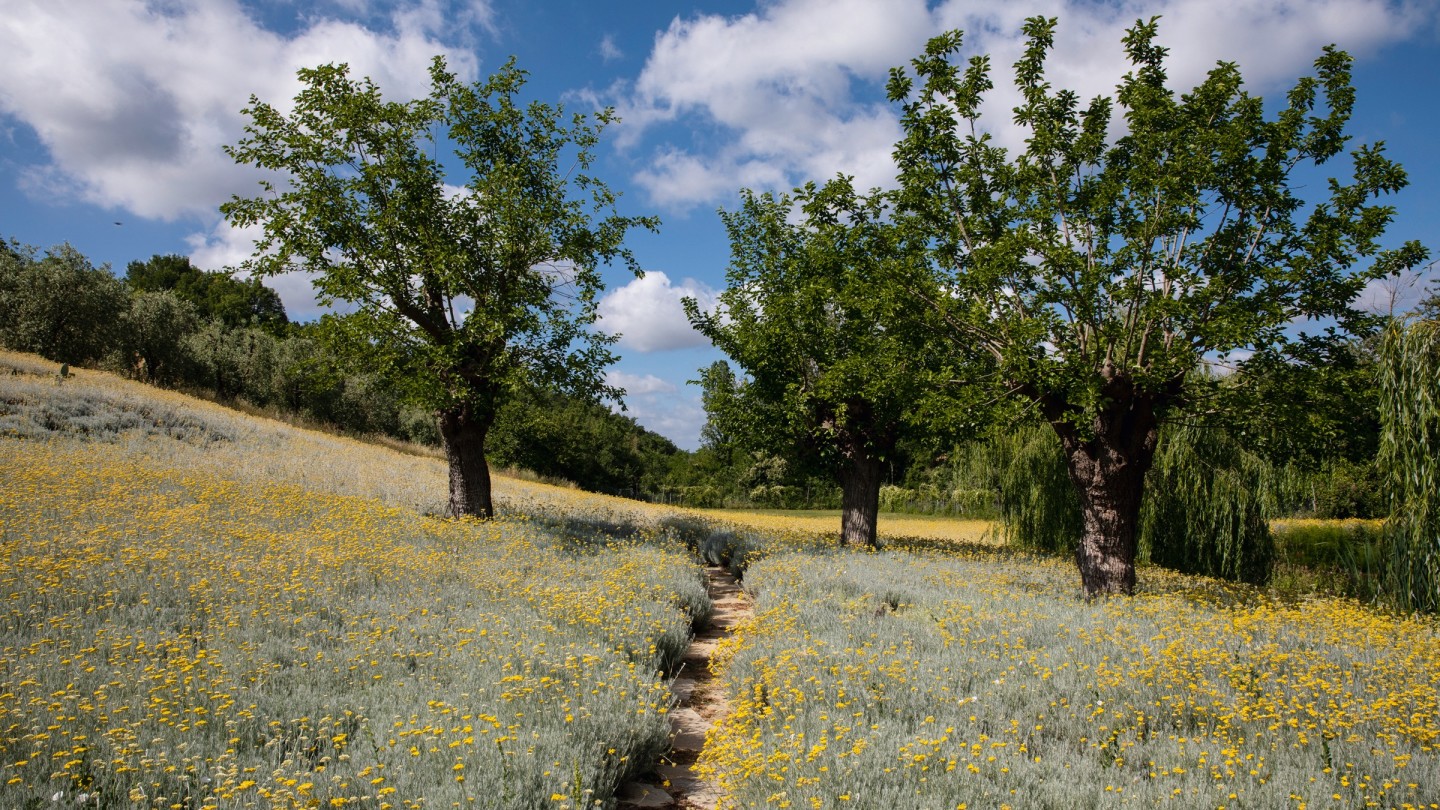
Simply sign up to the Arts myFT Digest -- delivered directly to your inbox.
There’s real magic to Castello di Ama, the wine estate at the heart of Tuscany’s Chianti Classico. Viticulture, history, hospitality and world-class art have been in thoughtful conversation here for more than 20 years. A walk through the 18th-century borgo at its centre invites you in. In a former chapel, you find a work by Anish Kapoor – a disc of light submersed in the stone floor, pulsing red in sacred silence. Along a cobbled lane, parcels of neon colour glow here and there, painted by the Cameroonian artist Pascale Marthine Tayou. Deep in an old well, a girl hewn from marble kneels by a pool, her torso metamorphosing into a blooming flower; a sculpture by the late Louise Bourgeois. Here a Sugimoto; there, down a subterranean stair, a Pistoletto; far off across a vineyard, just glimpsed through silver olive boughs, an intriguing installation by Ilya and Emilia Kabakov.
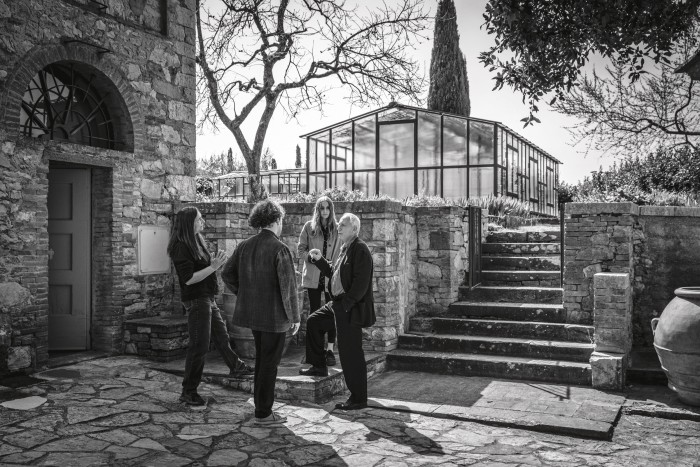
Since beginning their collection in 2000, Ama’s co-owner Lorenza Sebasti and award-winning winemaker Marco Pallanti have invited 17 artists to explore its 500-plus acres and create site-specific works. The most recent of these, called Per Ama, is least expected, and not just because it came to fruition during the pandemic: a lyrical, romantic two-acre garden designed by an artist known for anything but romance – the American neo-conceptualist Jenny Holzer.
Philip Larratt-Smith, who collaborates with Sebasti and Pallanti, notes that Holzer’s work, much of it text-based public projects from Times Square billboards to condos, is usually “cool, ambiguous… she’s known for acidic dissections of power relations in politics, society and between the genders”.
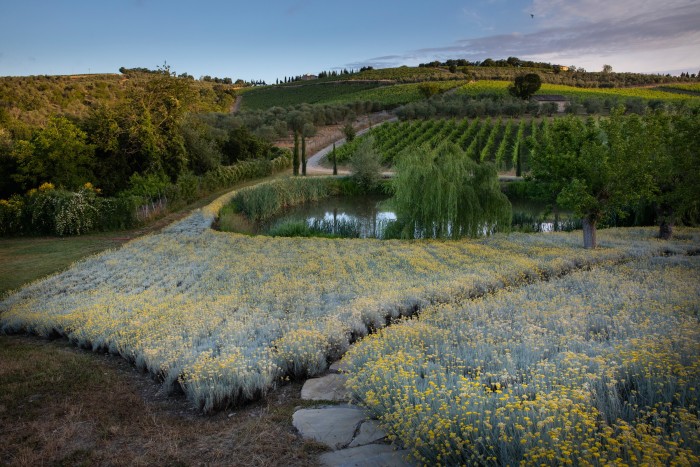
Larratt-Smith joined the Ama project in 2015 – the year that Sebasti first met the artist at a show of her War Paintings. “I still don’t know how I had the courage to approach her,” says Sebasti. “Her openness and gentleness surprised me because from her art, and her political focus, I’d have expected her to be tough.”
But it wasn’t until 2017 that Larratt-Smith proposed inviting Holzer to Ama, a place whose “purity, integrity and modesty” he felt would resonate with her.
“I found the landscape impossibly pretty and beautifully ordered,” Holzer recalls of her first visit that same year. “The ground works to make wine, and the venerable stone spaces never quarrel. The art and space unions are a credit to the artists and to Ama.”
Over the course of three years and site visits by the artist and her team, various proposals were mooted. Holzer is funny and self-deprecating about the process: “I had a few questionable – well, bad – ideas before I came to a garden. One featured a dire presentation in a former chicken house and another would have sunk a white marble phallus in a well.” But after “chicken-house and penis discouragement” from various quarters, she noticed a semi-forgotten area next to the estate’s San Lorenzo vineyard – a slope of untended earth leading down to a pond shaded by willow trees.
The landscaping was executed by the stone carver Adam Paul Heller and the team at Ama; Holzer herself was unable to travel to Italy due to the pandemic. Perhaps in part because of the strange circumstances, the result, says Larratt-Smith, “is a real departure for Holzer. It’s thrilling to have a work… that reveals the more emotional and romantic side of her sensibility.”
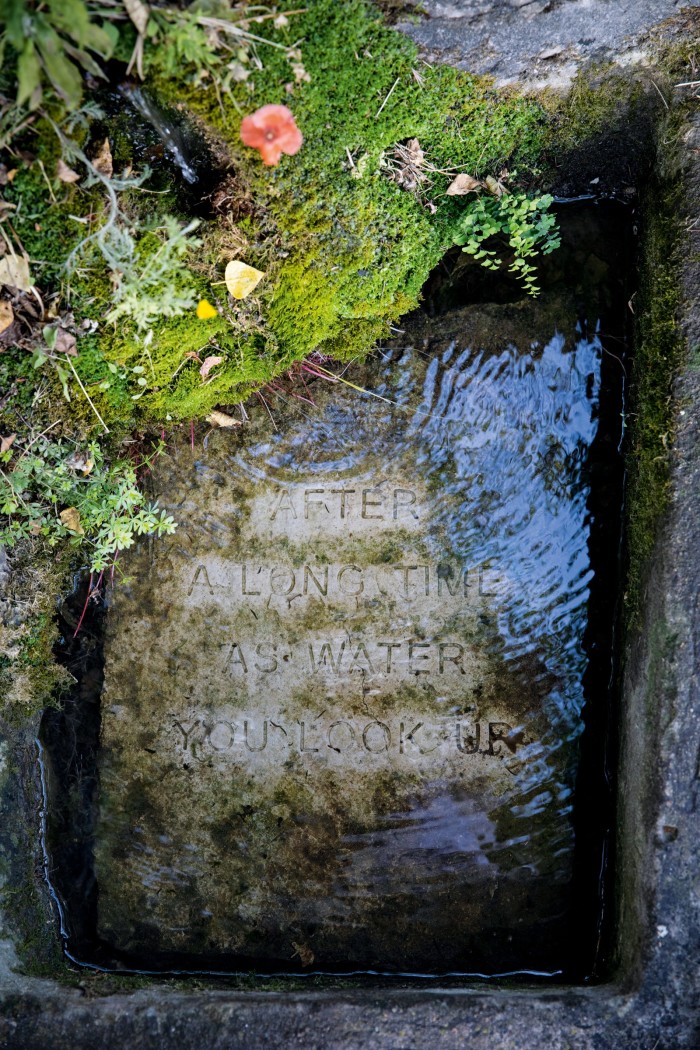
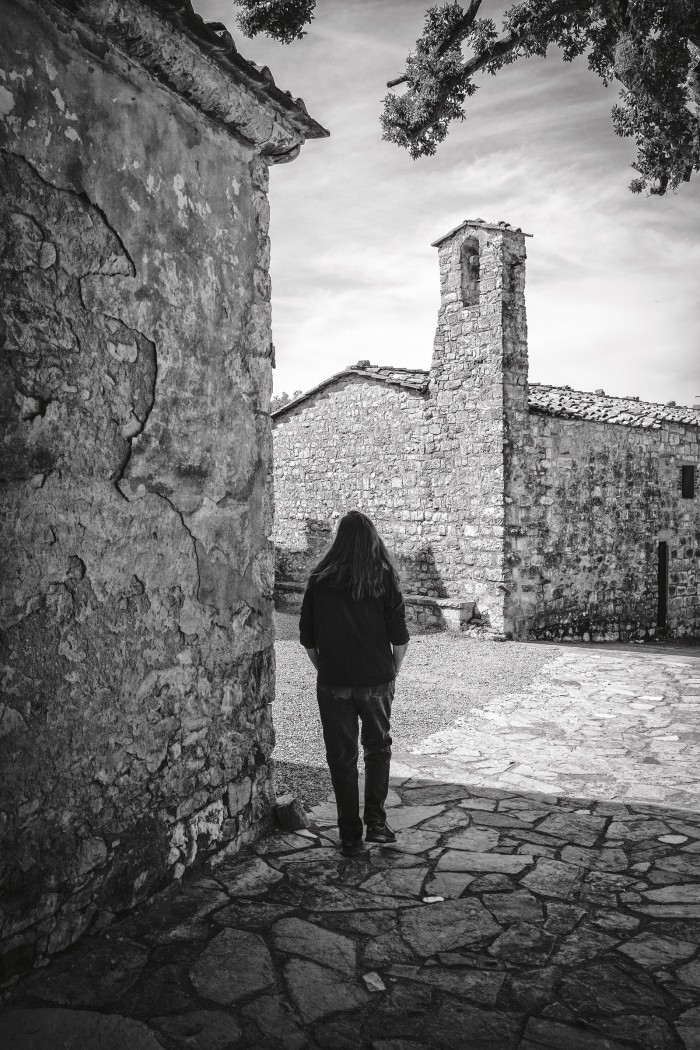
The garden is both austere and soft, whimsical and rigorously structured. Helichrysum – everlasting flowers –dominate, planted in rows across several shallow terraces; these are intersected by paths of yellow-cream stone sourced from Chiusi in Tuscany. Eight mulberry trees punctuate the herbaceous expanses, which in June and July glow yellow with blooms and recede to quiet silver-green in autumn and winter. Here and there, cacti raise spiky paddles towards the sky. “We studied plants from the exotic to the dangerous to what’s medicinal, before settling on what looks and smells wonderful,” says Holzer of the helichrysum – which, crushed between the fingers, emanates a pungent curry scent. “Too little in the world smells good,” she adds. “The scent can announce the garden before it’s seen.”
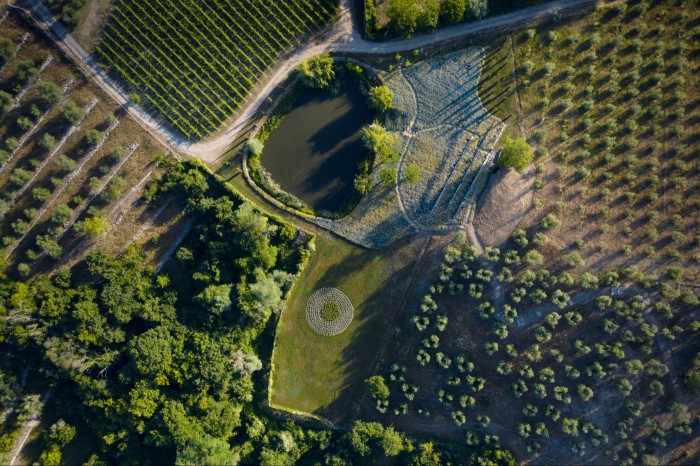
It’s a visual and olfactory delight; but the poetry, as with all Holzer’s work, inevitably comes from language. Holzer selected passages from two poems – Essere Animale per La Grazia by the Italian Poet Patrizia Cavalli, and WS Merwin’s The Biology of Art – and had them engraved in two large stones. The Merwin was submerged in a basin, fed by a spring at the top of the garden; beneath bits of moss already accreting to it, it reads “After/A long time/As water/You look up.” The Cavalli – larger, at about 1.5m across – sits at the side of the pond like a promontory bowered in willow branches: “To be animal for the grace/Of being animal in your heart/Love sees me/Sees me while I sleep/It’s why I sleep/Usually I sleep.” Holzer had worked with Cavalli’s words before, for a light-projection project along the Tiber in Rome. “This fragment is tender, wrecked, determined, hopeful; just what I want cut into rock,” she says.
Sebasti is gratified that Ama lent itself so serendipitously to Holzer’s vision. “Working with nature this way was always going to require time; and this is what has always distinguished our project. What we offer every artist we invite to Ama is the time and the space to truly make it theirs. This garden fully expresses that side of Jenny.” For her part, Holzer is looking forward to the vernissage – the first time she will see her completed work. “I can return as a fond tourist now.”
Per Ama opens on 9 October; visits by appointment, castellodiama.com
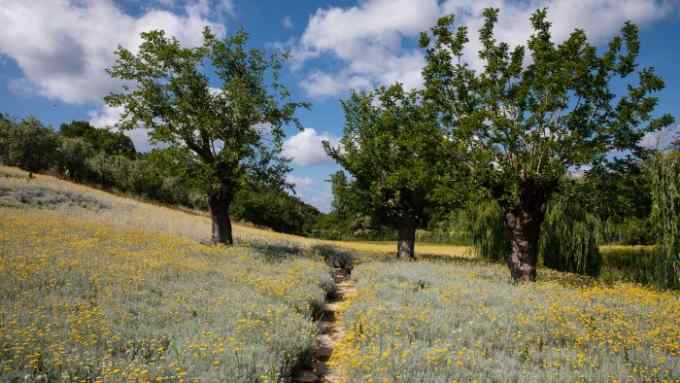
Comments